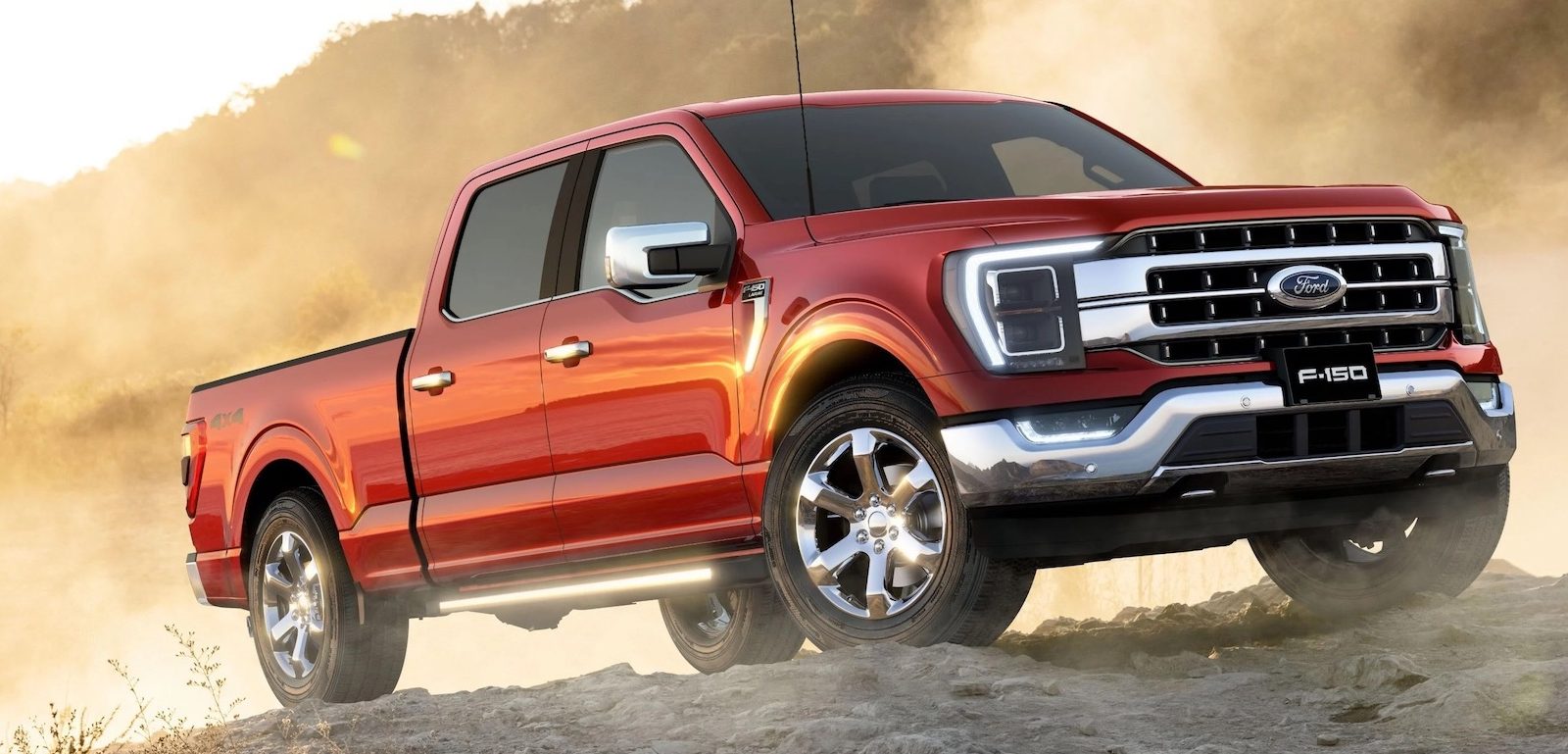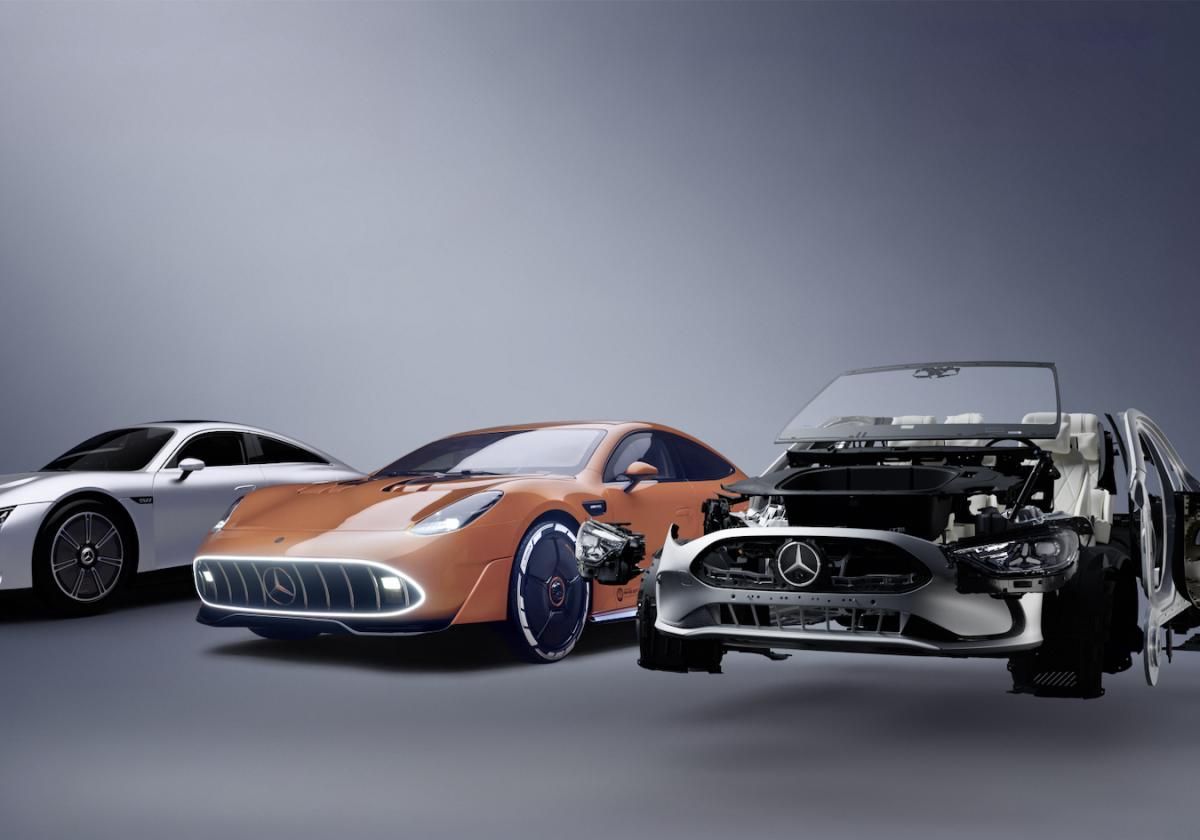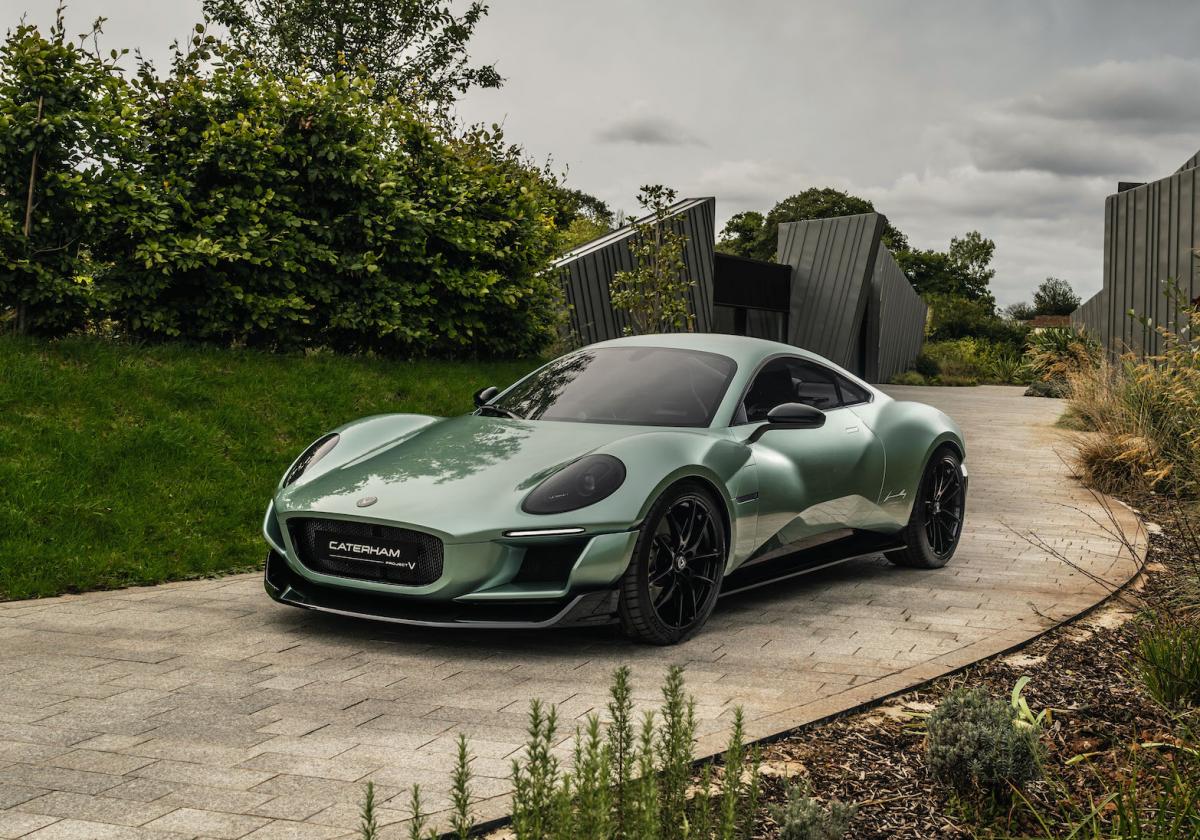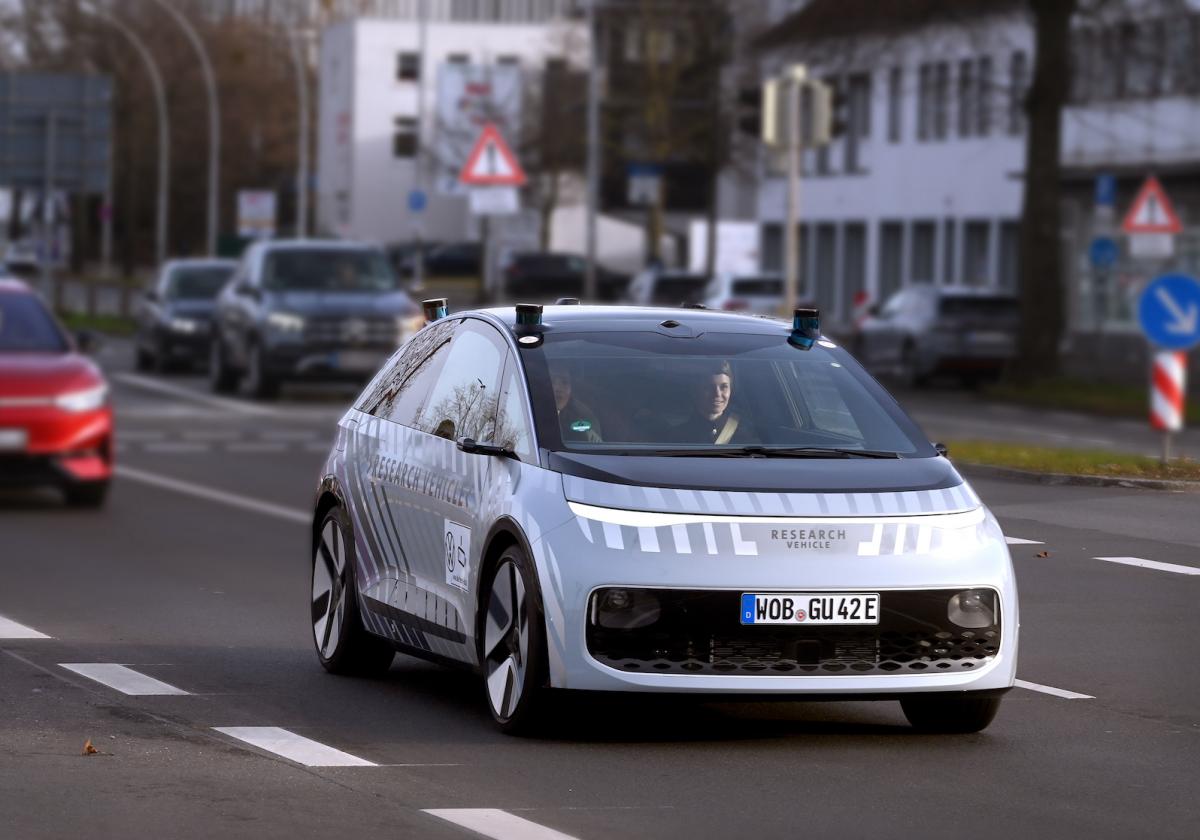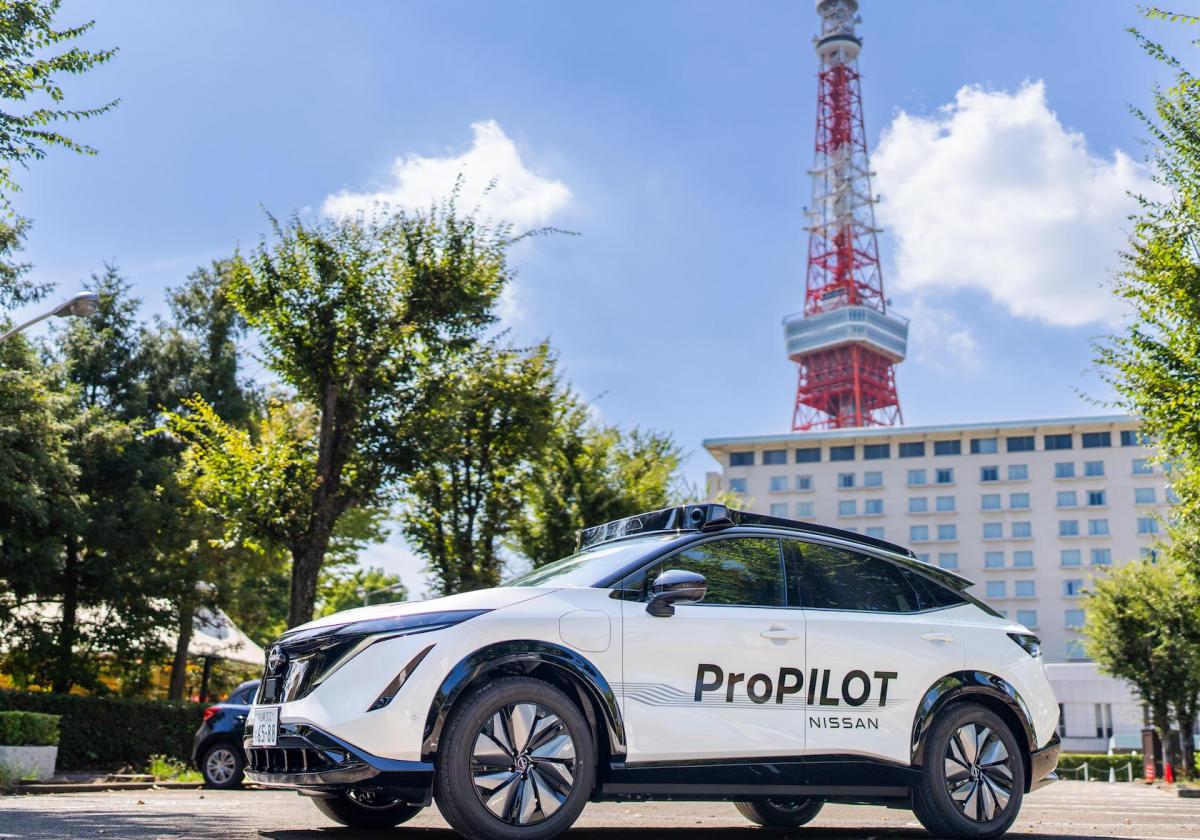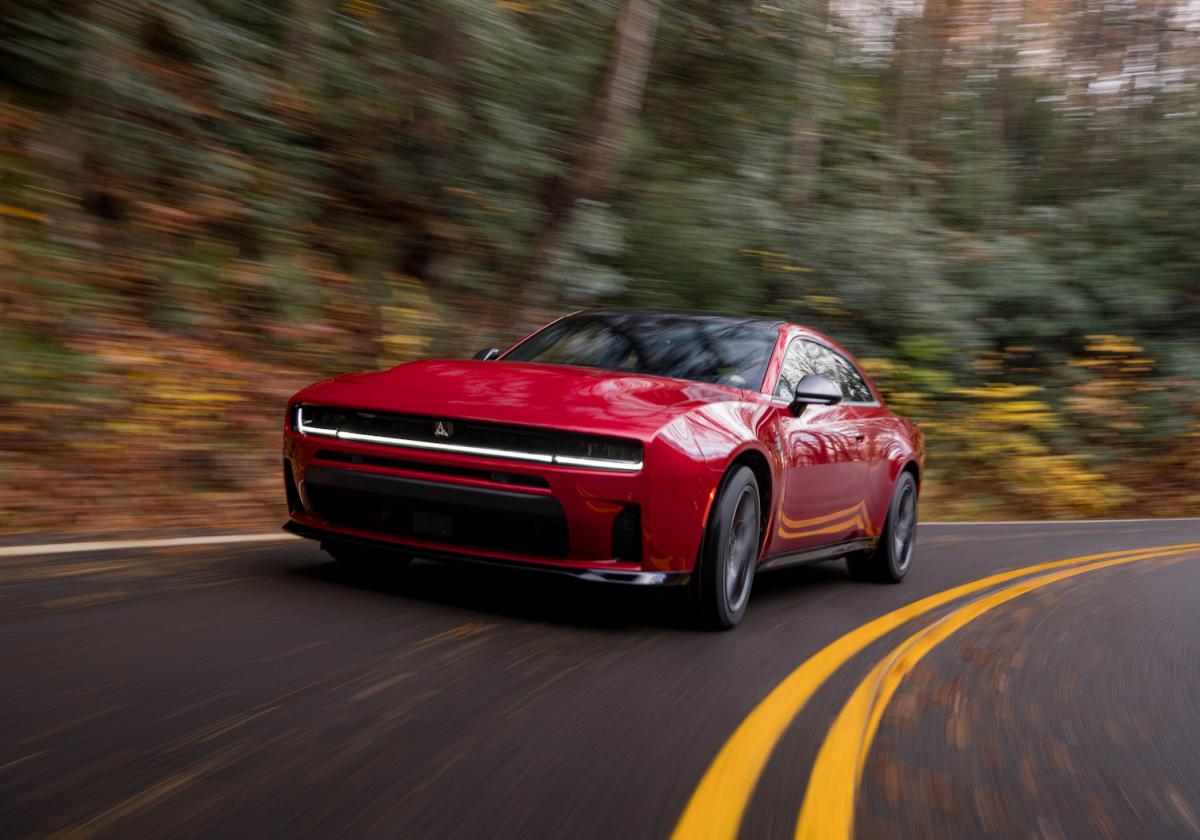- As these large pickups transformed from workhorses to lifestyle vehicles, their design changed to cabs that expanded to accommodate more passengers
- America has a unique relationship with pickup trucks, with the Ford F-150 being the best-selling vehicle in the U.S. for more than 40 years
- The 2022 F-150 earned a “top safety pick” rating from the Insurance Institute for Highway Safety and earned “good” or “superior” ratings in various crash tests
Big pickups remain the top sellers in the U.S. Sales of full-sized pickup trucks are ultimately sustaining carmakers and creating record profits. However, in the same breath, pedestrian and road safety advocates say today’s massive trucks are a hazard, given their size, weight, and driver blind spots.
We looked back over the past five decades to examine the societal and lifestyle changes behind pickups’ ever-increasing size.
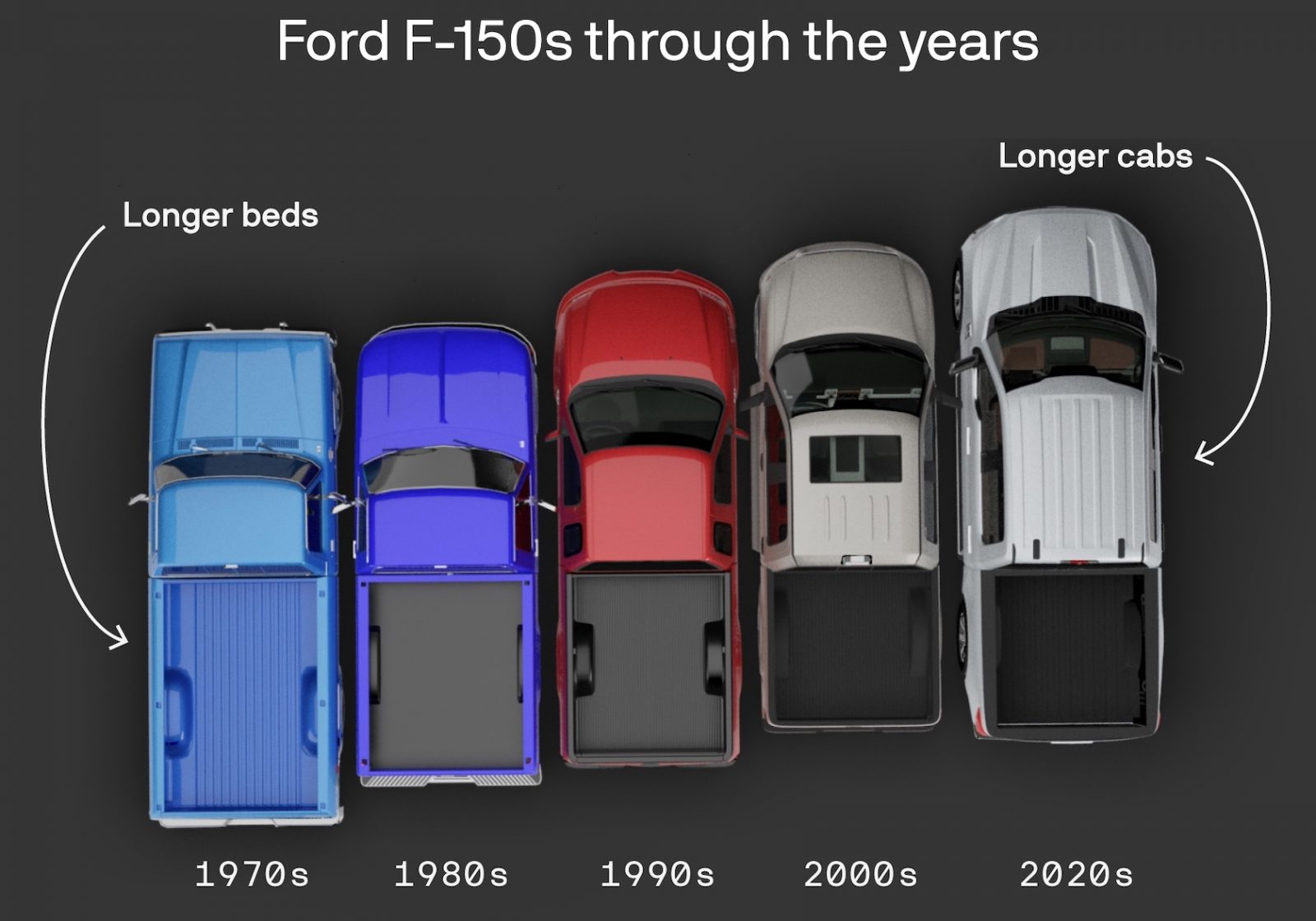
America has a unique relationship with pickup trucks, with the Ford F-150 being the best-selling vehicle in the U.S. for more than 40 years. But during that time, pickups from all carmakers have become bigger, bulkier, more high-tech, and more competitive.
By the mid-1980s, about half of all pickup trucks were categorized as small or midsize. But by the 2010s, small pickups all but disappeared as Americans increasingly chose a big truck lifestyle. As these large pickups transformed from workhorses to lifestyle vehicles, their design changed to cabs that expanded to accommodate more passengers.
A fascinating figure shows that the first generation of F-150s was 36% cab and 64% bed by length. By 2021, the ratio flipped, with 63% cab and 37% bed. Survey data from vehicle research firm Strategic Vision shows a third of today’s pickup owners rarely or never use their truck for hauling, while two-thirds rarely or never use it for towing. Instead, experts say, much of the big pickup mania is being driven by consumers’ self-image. “Today, personality and imagery are playing an even more important role in how consumers choose which truck is right for them,” says Strategic Vision researcher Alexander Edwards.
The firm surveys owners each year about the character traits they associate with their vehicles. Two words set F-150 owners apart: “powerful” and “rugged.” One result of supersized trucks is greater risks to pedestrians and other motorists. Drivers of today’s trucks sit much higher, creating a blind spot where small children or wheelchair users are hidden from view. This is an issue that needs to be addressed by regulators and carmakers.
In addition, the tall front of a truck strikes pedestrians in the torso or head, which is where vital organs are located — whereas the lower hoods of cars typically strike pedestrians in the legs.
Pickups also tend to be more dangerous in collisions between differently sized vehicles — car drivers are 2.5 times more likely to die when colliding with a pickup as compared to another car, per a 2019 study.
In the meantime, Ford says “safety is a top priority,” and points to safety-related technologies such as pedestrian detection sensors, automatic emergency braking, 360-degree cameras, and more, some of which now come standard.
Other pickup manufacturers have added similar features.
The 2022 F-150 earned a “top safety pick” rating from the Insurance Institute for Highway Safety and earned “good” or “superior” ratings in various crash tests, including those with other vehicles, and with child and adult pedestrians.
While we do not expect them to grow of size, pickup trucks are still evolving to keep up with Americans’ changing lifestyles. And now that they’re going electric, many offer capabilities and bonus features that aren’t available from gasoline or diesel trucks. These include better torque and faster acceleration, and the ability to power a worksite, campsite, or tailgate party without burning gasoline.
OUR THOUGHTS
The F-150 has been a top-selling vehicle in the U.S. for over 40 years. Its size, features, price, and handling suit the American way of life down to a tee. So do the top-selling models from GM and Chrysler. Yes, it’s true that pickups also tend to be more dangerous in collisions between differently sized vehicles with car drivers being 2.5 times more likely to die when colliding with a pickup as compared to a standard car, per a 2019 study. Only now, electric cars offer capabilities and bonus features that aren’t available from gasoline or diesel trucks.

